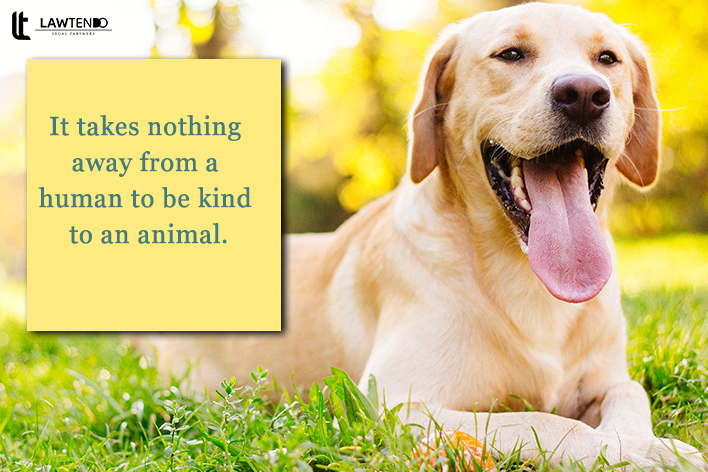Complete guide on prevention of cruelty to animals act

Date : 26 Aug, 2019
Post By Sankul Nagpal
It wouldn’t be wrong to say that animals bring out the best in us it can also be said that humans do not reciprocate the way they should. This is evident from the fact that every day thousands of voiceless animals are maimed, killed, harassed and even sold. But these practices are soon to be curbed as the law of the land not only recognizes but also protects the rights of these voiceless animals. A joint effort by animal protection groups including PETA India and the support of the government has led to the Ministry of Environment, Forest and Climate Change release for new Gazette notifications under the Prevention of Cruelty to Animals Act, 1960 to regulate dog breeders, animal markets, and aquarium and “pet” fish shop owners in 2017. What is animal cruelty? Cruelty to animals, also called animal abuse is a term used to define the infliction of sufferings or harm upon any non-human by human omissions/commissions. Animal cruelty can take up many different forms and includes not only overt and intentional acts of violence towards animals, but also animal neglect or the failure to provide for the welfare of an animal under one’s control. In addition to this, it is important to remember that animal cruelty is not only restricted to physical harm but also includes psychological harm in the form of distress, terror, etc. The Prevention of Cruelty to Animals Act, 1960 The Prevention of Cruelty to Animals Act, 1960 is the Central Legislation covering animal protection in India. The aim and objective of the Act are to prevent the infliction of unnecessary pain or suffering on voiceless animals. As per the new rules of 2017 and the earlier provisions of the act, dog breeders, aquarium and fish pet shop owners must compulsorily register themselves with the state Animal welfare Board to carry on the trading/breeding activities. Further the rules provide that no aquarium can keep, house or display “any cetaceans, penguins, otters, manatees, sea turtles and marine turtles, artificially coloured fish, or any species of fish tank animals listed in the Wildlife (Protection) Act, 1972 (53 of 1972), or any species listed under the Appendix I of the Convention of International Trade in Endangered Species” With respect to street animals, Section 11 of the Prevention of Cruelty to Animals Act provides that if any person allows, or himself beats, kicks or tortures, in any way, any animal subjecting it to unnecessary pain and suffering will be liable to pay a fine of up to 50 Rs. In case of repetition of the offence, there could be imprisonment for 3 months along with fine. Catering to birds, Section 11 of the PCAA provides punishment for any person who himself takes part or promote any shooting match/competition where animals are released from captivity for shooting/competing. The sale of cattle, including buffaloes, and camels for slaughter through illegal animal markets is not allowed as per the Act. The sale of cattle and camels can only be made to a person who carries valid documents that prove that he or she is an “agriculturist” The Act also provides protection to “pets” and punishes any owner who fails to provide his animal with sufficient food, drink or shelter and any person who, without any reasonable cause, abandons an animal in such a situation where the animal is bound to suffer pain due to starvation or thirst. Thus this act protects pets, birds, sea animals and other voiceless creatures that are often subjected to torture. Though the implementation of these ACTs still remains a cause of concern, their objective and aim still stand strong to give a voice to the voiceless. For legal assistance in animal protection issues visit www.lawtendo.com today!





